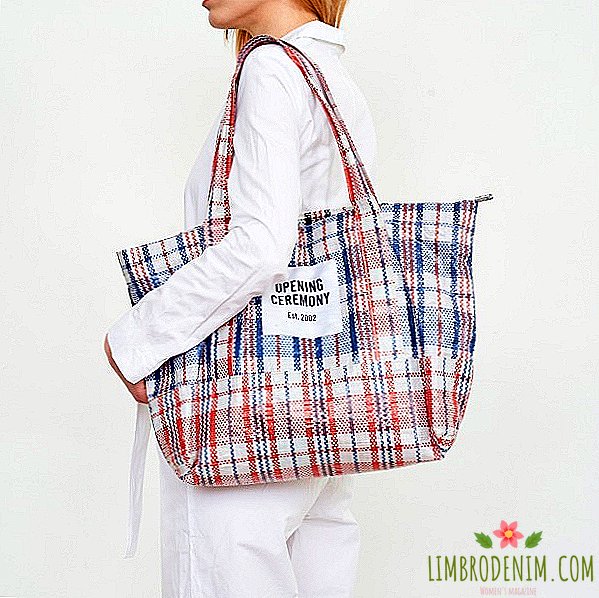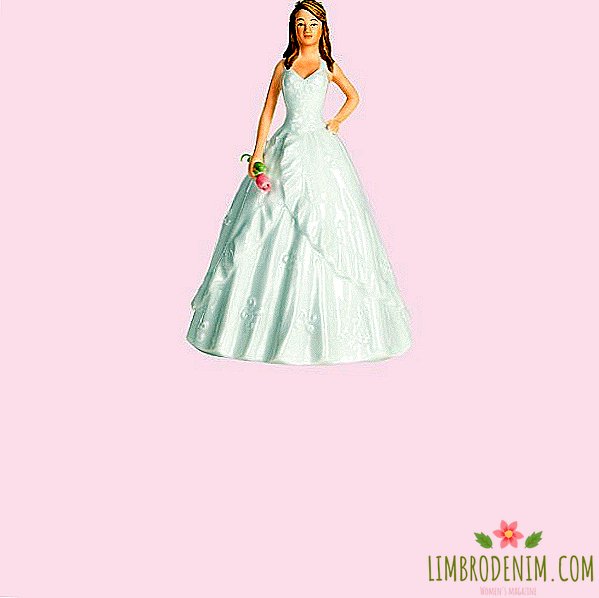Who is it stitched for: Why brands don't take our options
EVEN IF MANY YEARS A CONTRACT YOUR WEIGHT DOESN'T CHANGEThis does not mean that all this time you will buy the same size in your favorite stores. People around the world are faced with a problem: things very rarely fit perfectly - besides, clothes of different brands, but with the same numbers on the label do not sit the same. There is no need for a large detective investigation - just walk through the fitting rooms in the mall to make sure that each brand comes up with a dimensional grid in its own way. The letter designations are even more tricky: to guess by eye which parameters correspond to the options from XS to XL is difficult. And if we consider that within each of them a step of a few centimeters is possible, what to do with double markings like XS-S is absolutely incomprehensible.
The way brands put sizes and for what “average” patterns they sew things for everyone pulls into conspiracy theories. There are more questions than answers: why in America the same parameters for seventy years from the 12th size turned into the 6th? Why do some people do not release the 14th size of jeans, although it is worn by 67% of American women? Do companies want to reduce the percentage of clothing that online store customers return due to size problems? In the US, it is 40%. Today, when beauty standards are changing in the direction of diversity, it is especially strange that many buyers cannot find suitable models.

How women's measurements came up from men
In the first half of the last century, people, regardless of wealth, sewed things themselves or to order. But the crisis of the 30s in America, and then the Second World War led to the fact that individual tailoring has become too expensive for many. Ready-made clothes entered the market, but there was no universal size system. The US authorities, for example, decided to form a standard and turned to statisticians Ruth O'Brien and William Shelton for a nationwide study among women. They decided to abandon the outdated method of determining the size of the chest, as they did in the case of the production of military uniforms for men. Needless to say, the dimensions in this case could not be exact.
However, the statisticians themselves adopted the wrong method - to measure height and weight and thus determine the size. For the study, Shelton and O'Brien invited about 15,000 poor women who were paid for their participation money; statistics did not take into account that after economic crises, the quality of life of the population will change and people will gain weight. As a result, a standard was formed, which was informally called an "hourglass", it formed the basis of patterns, under which women drove themselves for almost thirty years - from the 50s, when it was adopted, and to the 80s, when it was abolished as non-working . The failure of the approach was proved by a study conducted by a private corporation of textile clothing technology: among their 11 thousand respondents aged from 18 to 80, the same parameters corresponded to 8%, while for the overwhelming majority about seven types of figure were singled out.
In other countries, including the USSR, annual measurements of the population were carried out: height, weight, and constitution were taken into account. According to Lyudmila Norsoyan, founder of Fashion Factory School, these statistics took into account all the nuances of the figure, and used them to design and control the size grid: “Such basic measurements in the 21st century were no longer carried out. Worse, by the end of the last century they became random and non-representative, with a survey of small sample groups. And considering that since then the population has changed dramatically, even visually (mixing of people, climate change, food and water, a radical change of physical labor for sluggish occupations) , - all analytics and recommendations for clothing designs have long and hopelessly outdated, "- says Lyudmila.

How to search for "average" woman
There is simply no single global size system. In different parts of the world, there are organizations that develop dimensional standards that serve as a kind of recommendation - brands take them as a basis and customize them to the needs of their audiences. For example, in the same US, the non-profit organization ASTM International, which since 1995 has been publishing anthropometric measurements of the population, is engaged in standardization. And although experts say that their first report is based on the system adopted in the 1950s (“Old numbers just continue to be obscene,” they say), the institution periodically updates its own research, which takes into account the desire of people to be “thinner” than they are - at least in the size system. For example, the smallest size in 1958 was marked with the number 8, in 1995 - 2, and in 2011 - two zeros.
There is also a European size standard, which was developed by the European Organization for Standardization: it was assumed that after 2007 the members of the union would replace outdated dimensional data. Only one part of it consists of measurements of the head, neck, bust, waist, hips, height, length of arms, and so on - it is not necessary to follow it. Big brands work with him, for example Monki, who choose models for fitting clothes, whose proportions correspond to this approach. “Nevertheless,” they say in the brand’s office, “our design often represents oversized styles, which allows us to move towards larger sizes. We always create a collection taking into account different types of figure, which is reflected, for example, in jeans styles - this is high and low fit, oversight and direct models. In addition, we added size XL to meet the demand of our audience. "
The way brands respond to the above-mentioned desire to be nominally "slimmer" even got a special name - "vanity sizing". Stamps specifically increase the size parameters, but while some openly deny this approach, others suspiciously remain silent. Experts believe that manufacturers deliberately play on the audience complexes to tie it to themselves: having bought a less thing, a person not only feels better, but receives an incentive to return to where he found it. Some studies show that this increases customer self-esteem.
Manufacturers customize the size also because they work in very different markets. As explained at the head office of H & M, despite the fact that the brand uses the same dimensions everywhere, their parameters will differ in different countries. Designer Fy: r Svetlana Salnikova explains the situation further: "Asian patterns are created for a more androgynous figure, Italian or French products have narrow sleeves and armholes, German ones have, on the contrary, wider ones. American sizes are larger in all girths."
So, if the American and European dimensions are more often labeled with the notation we are used to (from XS to XL), then Asian standards may not be understandable to the ordinary buyer. Moreover, they do not match the parameters. In Japan, for example, there are the designations SA, MB, LA, which, in theory, should coincide with our S, M and L, but in fact diverge by several centimeters. Therefore, in the store of Asian brands Europeans often have to buy "large" sizes.
"On the basis of tests and observations of sales, brands identify needs that remain uncovered. For example, JNBY, which I used to do, initially focused only on the Chinese market, and later faced the problem that their patterns often do not sit on" non-Asian "figures. Therefore the company began to produce adapted models for foreign markets: increased armholes in sleeves, expanded the bottom of the pants, and so on, "said Denis Yerhov, co-founder of research and consulting agency Dear Progress.
In this case, the details of collecting sizes and building patterns based on them are kept by large brands in secret. Norsoyan suggests that brands may not conduct their own measurements, but simply buy local databases and draw conclusions about the specifics of the market from a customer survey. "Relevant recommendations go down to action in the product departments of brands, and product managers to the best of their vision (here it is, the human factor!) Introduce adjustments in production."

What to do
Experts such as the fashion design program manager at Parsons Design School Fiona Dieffenbacher argue that it’s quite realistic to develop a wide grid with dimensions that all designers will take into account any types and features of the figure - this will make production more expensive. “If you are a big brand, it is not a question. You will have sales,” she is sure. But still the main problem is that many brands still inseparably associate fashion with “ideal” proportions, not taking into account that ordinary women wear their clothes, each with their own figure features.
"In the author's brand, the creator wants to dress beautiful girls with" perfect "parameters, so the design and the following features of the cut and designs are sharpened by conventionally" model "growth and size, with the subtext of" fashion exists only for thin and high ". And, as a rule , we admire such collections, but only a few can wear them, ”says Norsoyan. Some designers, she adds, purposefully sew clothes in “model” proportions — for example, Chanel, Prada, Thom Browne, and others. "Both the most conservative and the most creative - any clothes look good on tall and slender girls. Look at the wave of altercations about this going on in the fashion community: about anorexia, ignoring plus-size models, even photos and videos are merciless to women of ordinary appearance “Beautiful" sells everything else, and brands are quite cynical in this matter. The buyer is, after all, there are wealthy girls in the world with model parameters. They wear beautiful things, which becomes the ideological engine of fashion and equipment. From the collections, and advertising brands, "- explains the designer.
In this case, there is nothing left for an ordinary buyer, how to search for his brand, the size of the grid of which would exactly match the proportions of the figure. Not always affordable, but still a way out is to look for clothes from local or specialized brands that work for a specific audience or one specific market. According to Salnikova, it is important for a designer to sew basic things that suit his audience: “The base should not change with collections, because the buyer already knows how the models of the brand sit, loves him for specific products, is ready to buy online and is not afraid of an unpleasant surprise ".
Photo:caimacanul - stock.adobe.com, design56 - stock.adobe.com, brontazavra - stock.adobe.com, Christine - stock.adobe.com





